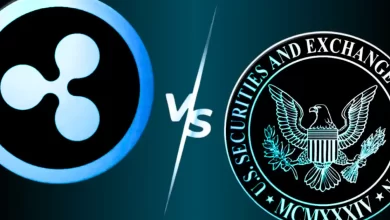Ripple Lawsuit Takes A Dramatic Turn – SEC Emails Exposed

The fight between the U.S. Securities and Exchange Commission (SEC) and payment company Ripple over XRP’s status continues. The US District Court for the Southern District of New York is yet to deliver a judgment on the matter, but a recent submission by the SEC’s staff has led to some interesting developments in the case.
Attorney’s Claim Could Be A Game-Changer For Ripple’s Future
Attorney John Deaton, representing XRP holders in the Ripple lawsuit, has highlighted a footnote in Ripple’s opposition and reply briefs submitted to the court. The footnote suggests that there are “reasonable grounds” to conclude that XRP does not satisfy all elements of the Howey Analysis and may not be considered a security under federal securities law.
I think they were included but not all referenced in the brief in argument.
BUT I MISSED THIS EVEN THOUGH I TWEETED IT OUT.
Read the footnote:
Exhibit 220 is part SEC emails: XRP is mentioend and that there are reasonable grounds XRP doesn’t satisfy ALL Howey factors. HUGE. pic.twitter.com/Y3AELAjwbF
— John E Deaton (@JohnEDeaton1) May 20, 2023
The Howey Analysis is a legal test used to determine whether an asset is a security, based on four criteria: (1) the investment of money, (2) in a common enterprise, (3) with a reasonable expectation of profits, (4) solely from the efforts of others. If an asset meets all four criteria, it is considered a security subject to federal securities laws.
The SEC has previously argued that XRP meets all four elements of the Howey Analysis and should be considered a security, subject to registration and other requirements under U.S. federal securities law. However, the recent submission by the SEC’s staff suggests there may be some doubt about whether XRP meets all of the criteria.
The outcome of the Ripple lawsuit will have significant implications for the cryptocurrency industry. If XRP is deemed a security, it could subject Ripple to significant fines and penalties for not registering with the SEC. It could also set a precedent for other cryptocurrencies, potentially leading to increased regulatory scrutiny and compliance requirements.
Attorney John Deaton’s claim highlights the potential for a favorable outcome for Ripple and XRP holders in the lawsuit. If the court determines that XRP does not meet all elements of the Howey Analysis and is not a security, it could have significant implications for the cryptocurrency industry as a whole.
Ripple’s CLO Cite SEC’s 1976 Ruling As A Legal Defense
Stuart Alderoty, Chief Legal Officer at Ripple, recently highlighted the SEC’s 1976 ruling on lithographs and their classification as securities. Alderoty noted that the SEC had previously stated that art lithographs, even when sold for investment purposes, are not considered securities if there are no post-sale contractual obligations from the seller in favor of the buyer.
In other words, if the seller of an art lithograph does not have any ongoing obligations to the buyer after the sale, such as providing financial returns or other benefits, then the lithograph is not considered a security under federal securities law.
The Andy Warhol lithograph in question is entitled “Prince Series,” which features a collection of 16 prints depicting the singer Prince. The prints were created by Andy Warhol in 1984 and were sold to a collector named Richard Weisman.
The SEC’s argument that XRP is a security hinge on applying the Howey test, the same legal test used in the Warhol Lithograph case. This ruling further clarifies the regulatory status of XRP and other similar assets. It underscores the importance of understanding the legal classification of different types of assets in the context of investment and securities law, according to Ripple’s lawyer.
Featured image from Unsplash, chart from TradingView.com





